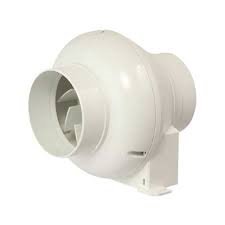D
Deleted member 65149
Guest
I have one of those very stylish angled cooker hoods (90cm Elica Black Shire) that came with our new kitchen installed a couple of years ago. I was warned that it was noisier than the standard horizontal hood because it needed to be higher powered, but I didn't realise how much noisier it would be. I thought we'd get used to it in time. After a few months I dampened some of the vibration generated noise by fitting some adhesive car sound deadening material to the inside of the motor/fan casing. It improved a bit, but not a great deal. Since then we've lived with the noise, only using the extractor when really necessary.
But instead of us getting used to it, it's got too much. So today I looked for possible ways to make it quieter, including possibly installing an in-line extractor in the ducting that goes through to the roof above the kitchen. But on a plumbing forum I discovered that the size of the ducting can make a difference to the noise levels. This made me read up the hood's installation instructions that within the smaller print said not to use ducting smaller than the 125mm outlet on top of the hood assembly. I gingerly clambered into the small loft space above the kitchen and saw that about 1.5m of flexible duct had been used between the hood outlet and the roof vent. It's 100mm diameter.
I thought that the difference between 100 and 125mm can't be enough to make a noticeable difference to the noise level, but then cast my mind back to the fluid dynamics I did at school about 60 years ago. What was the relationship between tube diameter and fluid flow? Mr Google came to my memory jogging aid with Poiseuille's equation. Plugging in the figures told me that dropping from a 125mm duct to a 100mm duct increases the flow resistance by nearly 2.5 times!!! That could easily make the motor and fans have to work a lot harder so noisier. The interference in a flexible duct can’t help either. When my currently aching back and Covid restrictions permit, I’ll be swapping the 100mm Flexi duct for 125mm smooth plastic pipe.
Hopefully that'll work. Any other realistic suggestions will be appreciated.
But instead of us getting used to it, it's got too much. So today I looked for possible ways to make it quieter, including possibly installing an in-line extractor in the ducting that goes through to the roof above the kitchen. But on a plumbing forum I discovered that the size of the ducting can make a difference to the noise levels. This made me read up the hood's installation instructions that within the smaller print said not to use ducting smaller than the 125mm outlet on top of the hood assembly. I gingerly clambered into the small loft space above the kitchen and saw that about 1.5m of flexible duct had been used between the hood outlet and the roof vent. It's 100mm diameter.
I thought that the difference between 100 and 125mm can't be enough to make a noticeable difference to the noise level, but then cast my mind back to the fluid dynamics I did at school about 60 years ago. What was the relationship between tube diameter and fluid flow? Mr Google came to my memory jogging aid with Poiseuille's equation. Plugging in the figures told me that dropping from a 125mm duct to a 100mm duct increases the flow resistance by nearly 2.5 times!!! That could easily make the motor and fans have to work a lot harder so noisier. The interference in a flexible duct can’t help either. When my currently aching back and Covid restrictions permit, I’ll be swapping the 100mm Flexi duct for 125mm smooth plastic pipe.
Hopefully that'll work. Any other realistic suggestions will be appreciated.


